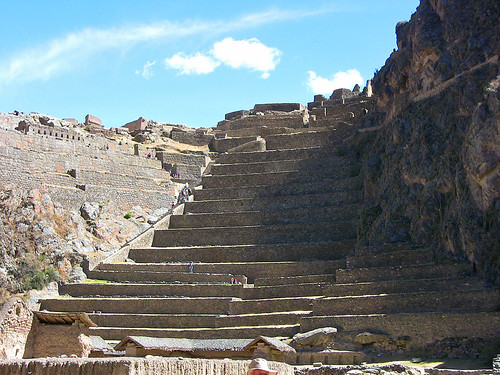
Click to enlarge
Ollantaytambo is about 47 miles from Cuzco, at an altitude of 8850'. Like Pisac, the old Inca town is situated above the colonial town, which itself dates back to Incan times. The word Ollantaytambo is a compound Quechua word. Tambo the word for a town that offers rest and lodging along a road.
Ollantaytambo was a important walled and fortified city. It controlled the road that lead north along the Urubamba river toward the Amazon region. This area, which the Inca called Antisuyo is where the modern name Andes comes from and was one of the four quarters of the Inca world. The people of the Amazon jungle, the Antis were one of the biggest enemies of the Inca. The road also brought many desirable items too. Fruits of all kinds and Coco leaves, which would not grow in the higher altitudes of the Inca homeland.
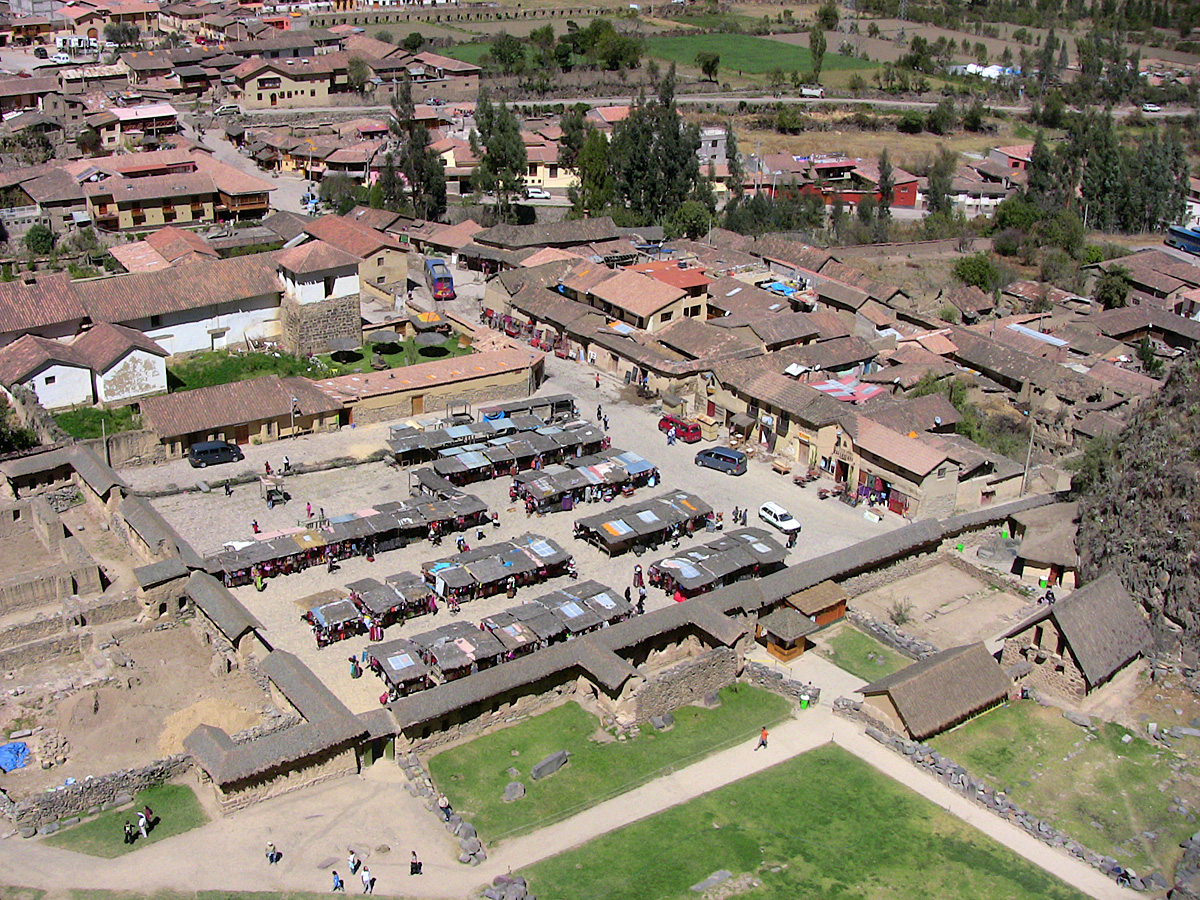
Click to enlarge
In the hills above the town are the terraces of Ollantaytambo and a massive Sun Temple. Down below, in the part of the city that is still lived in, was the Urban sector. Laid out in a typical Incan grid, this is the only place in Peru where one can still see people living in buildings that were used as homes in Incan times. The narrow streets still have their water channels and water still flows in them, although not while we were there. For some reason that even our guide didn't know, they were not flowing that day.
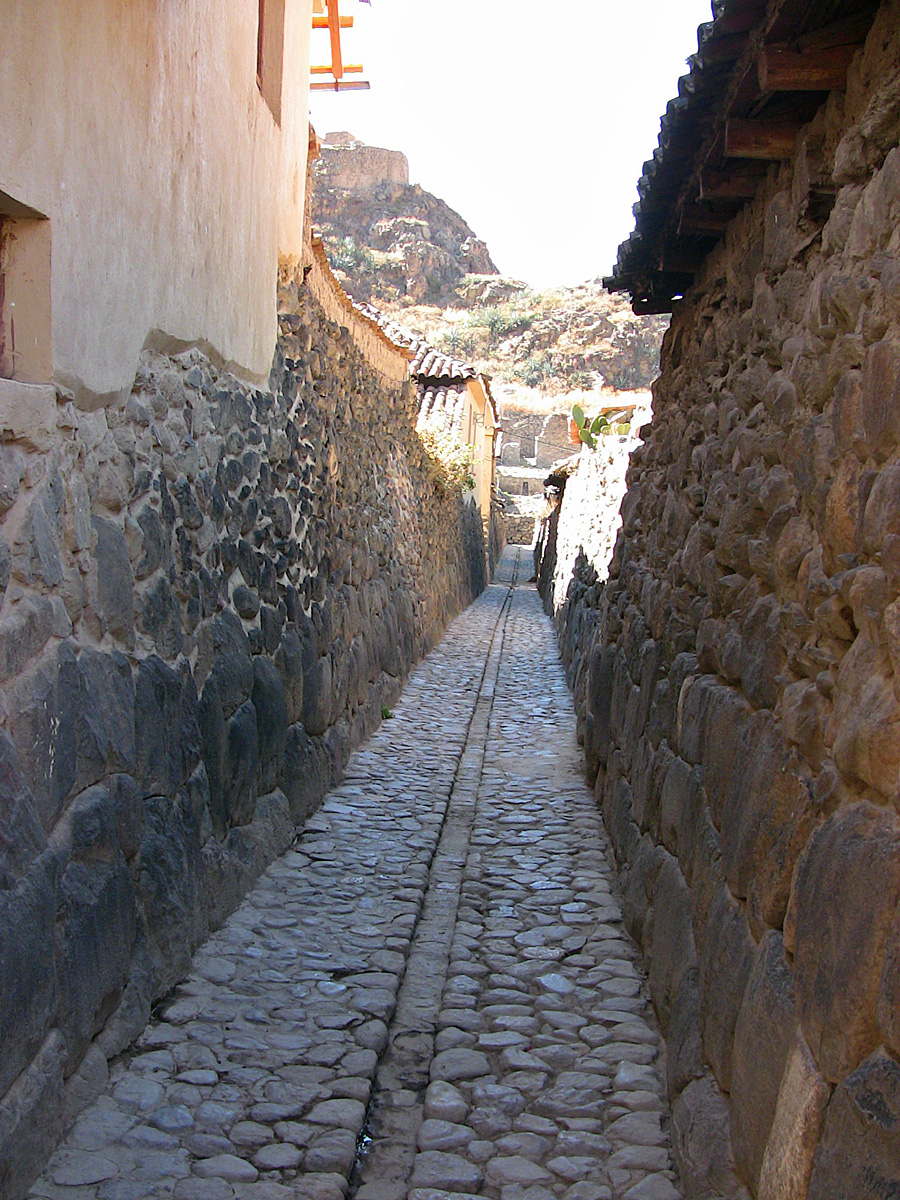
Click to enlarge
Our first stop was to a historic Inca house down one of these narrow Inca streets. We headed down the street aways from the plaza and, as always were mobbed by vendors, mostly women and girls, selling their wares. I bought a knit cap with some llamas in the design and the distinctive Andean ear flaps.

Click to enlarge
As we got farther away from the plaza, and closer to the Inca house, the street got quieter until the only other non-tourist in it was a young girl in traditional costume headed to the plaza to pose for tourist photos. I thought the Inca street would make for a nice location for a photo of her and gave her a Sol to take a couple shots.
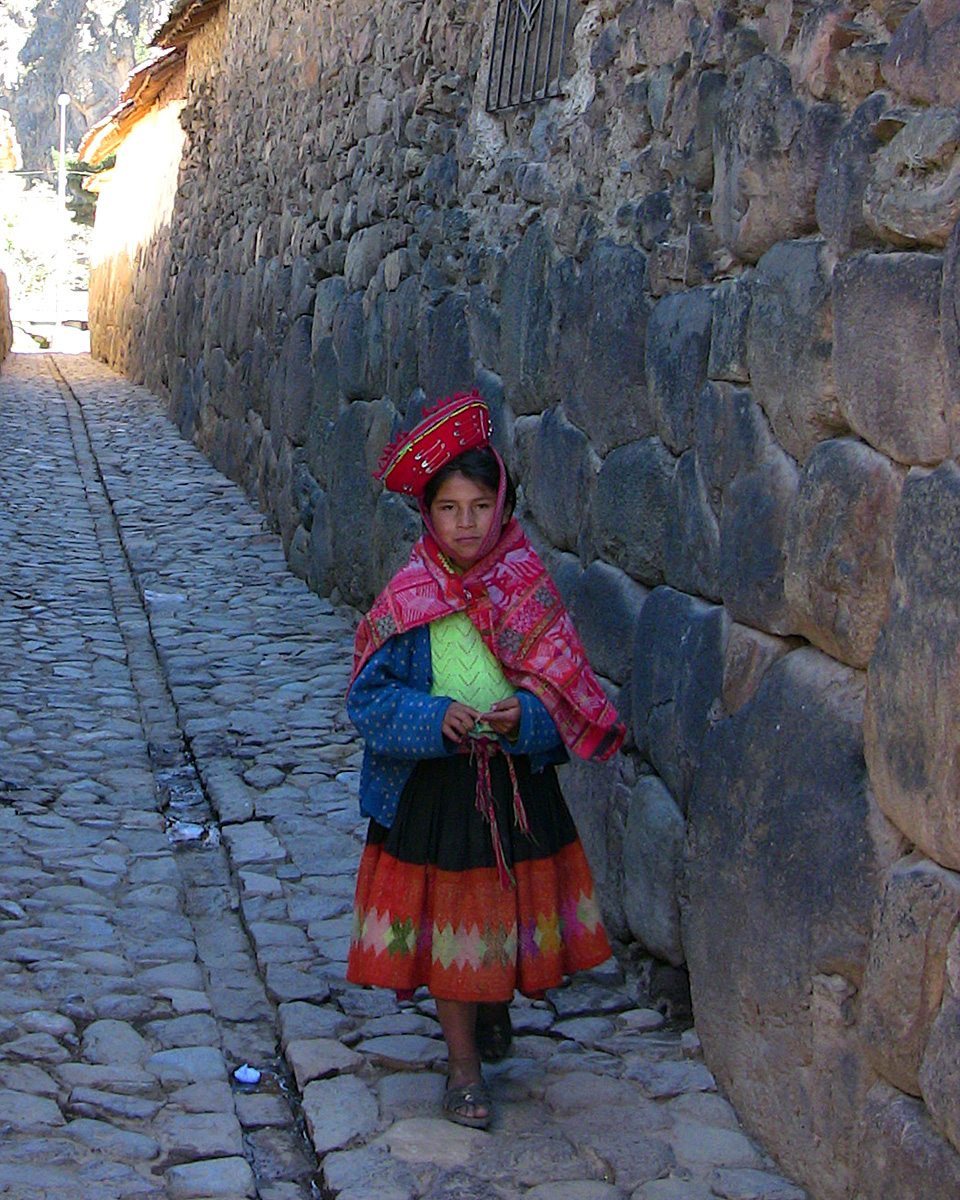
Click to enlarge
Her hat, like all the traditional hats, indicated where she was from. Like most Quecha people, she was quiet, somewhat shy, but very polite. It struck me, how different we must seem to her, as she does to us. What must she make of the throngs of tourists that flock to her town and get excited by her traditional clothing. "Does she go home at night and put on jeans and listen to her iPod", Claire wondered out loud? A good question.
As we would find out that night, during our private dinner in a Quechan home, while we as tourists marvel at the beauty of the landscape, the strong cultural tradition, and allow ourselves to wonder if their life, closer to the rhythms of the earth, is richer than ours. But the truth is their lives are hard, rough and full of struggle. While we as tourists dream of a more "spiritual" lifestyle they want what we have. Cars, TVs, better health care, decent food, a clean, safe environment, a better life for their children.
If we dream and wonder about their lives, they dream and wonder about ours.
I witness this all the time while I'm traveling through the American Southwest. Tourists come from all over the world to see Native Americans, fascinated by their culture and thinking that the Native cultures have the answer to our fast paced modern lives. They want to take an Indian name, do a sweat, and witness a ceremony. They dream of a life closer to the earth, in tune with nature. All the more ironic as our ancestors worked hard to create a life away from nature. Houses, roads, cars, etc. A life sheltered and protected from the elements. The history of most of human kind, especially western culture, has been to create a world of comfort and safety. Yet for some, when they attain that, they think that something is missing in their lives. Maybe it is. I guess each person needs to answer that for themselves.
I too have fallen into the myth of the indigenous life. During my time in Peru my senses were overwhelmed with the sights, sounds and smells of a unknown, exotic culture. But everyday I saw something that made me realize how lucky I am to have the life that my culture provides. Nevertheless, this did not diminish my respect and admiration for the people and culture I was visiting. Their culture has a richness and an authenticity that our modern, mass produced world lacks. But I still want my Starbucks...as it were.
When we reached or destination, the Inca house or wasi, this contrast of life styles was all brought into sharp focus as we laid eyes on their kitchen.
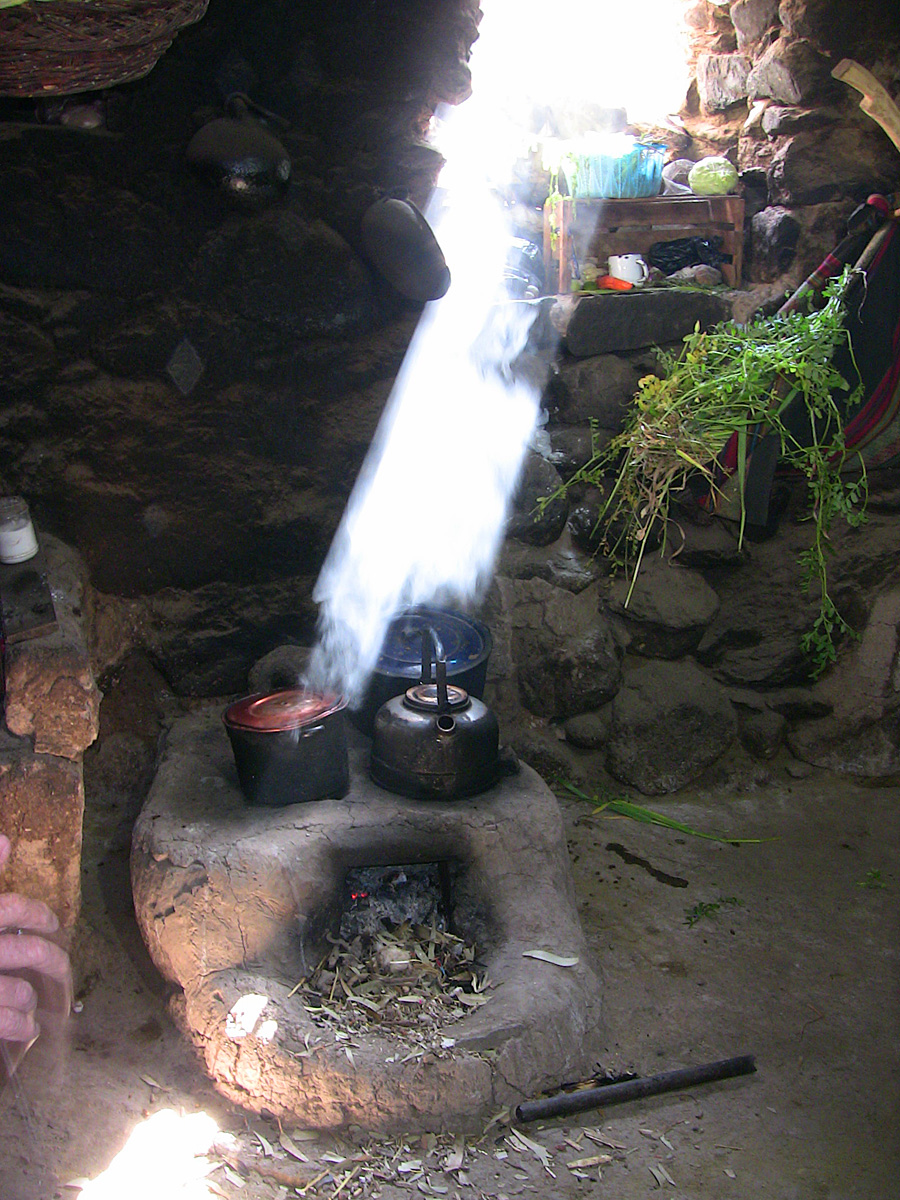
Click to enlarge
Just like the Chicha house, this home contained a very primitive kitchen. In fact more primitive. There wasn't even a small gas stove here. Just wood burning. Huddled up next to the right side was a brown and white Guinea Pig.
The house was part of a larger, traditional compound called a kancha. Most kanchas come in pairs that open onto a common courtyard or patio. The whole compound is walled off from the street, accessed through a small doorway.
The home we were visiting was just one large room. There was very little furniture. The bed was just a pile of blankets on a platform raised off the floor. The floor was the domain of guinea pigs, or cuy which wandered around, busily eating, having no knowledge of their fate. (Where as we humans do, of course...)
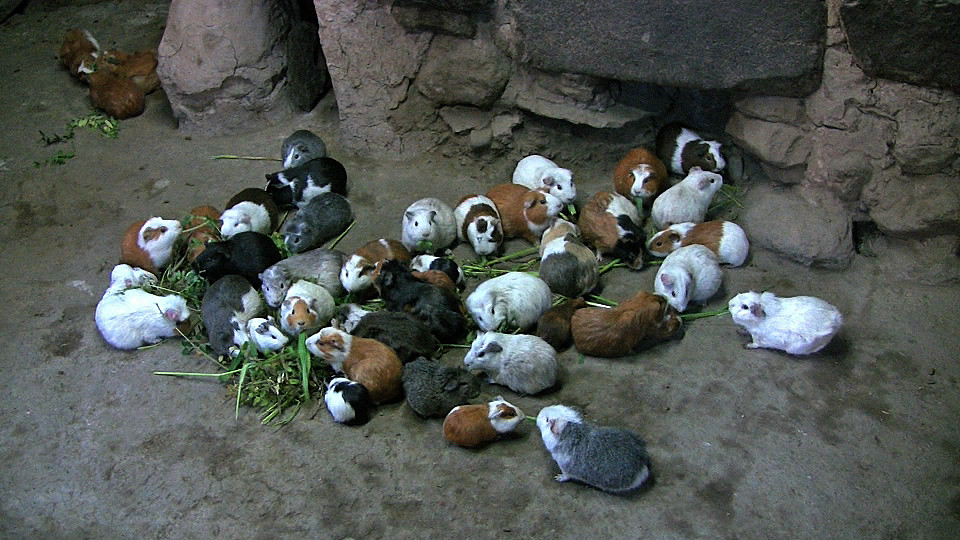
Laid out next to the wood stove were some common kitchen items and other things arranged for us to see. Different potatoes, corn a couch shell trumpet and other items.

Click to enlarge
Above this, set in a niche in the wall were two skulls from the ancestors of the home's current occupants.

Hanging from the roof beams in a bundle of other items was one of the most unusual things we saw in Peru. Unusual to us, anyway. This was the fetus of a Llama. In Prehispanic times the Inca sacrificed llamas to their Gods. These days their fetus are still used as an offering to the Mother Earth, Pachamama. They are buried under the foundation of a building before it goes up, for blessings of health, safety, happiness, wealth and fertility.

Click to enlarge
The wing of a condor hung on the west wall.
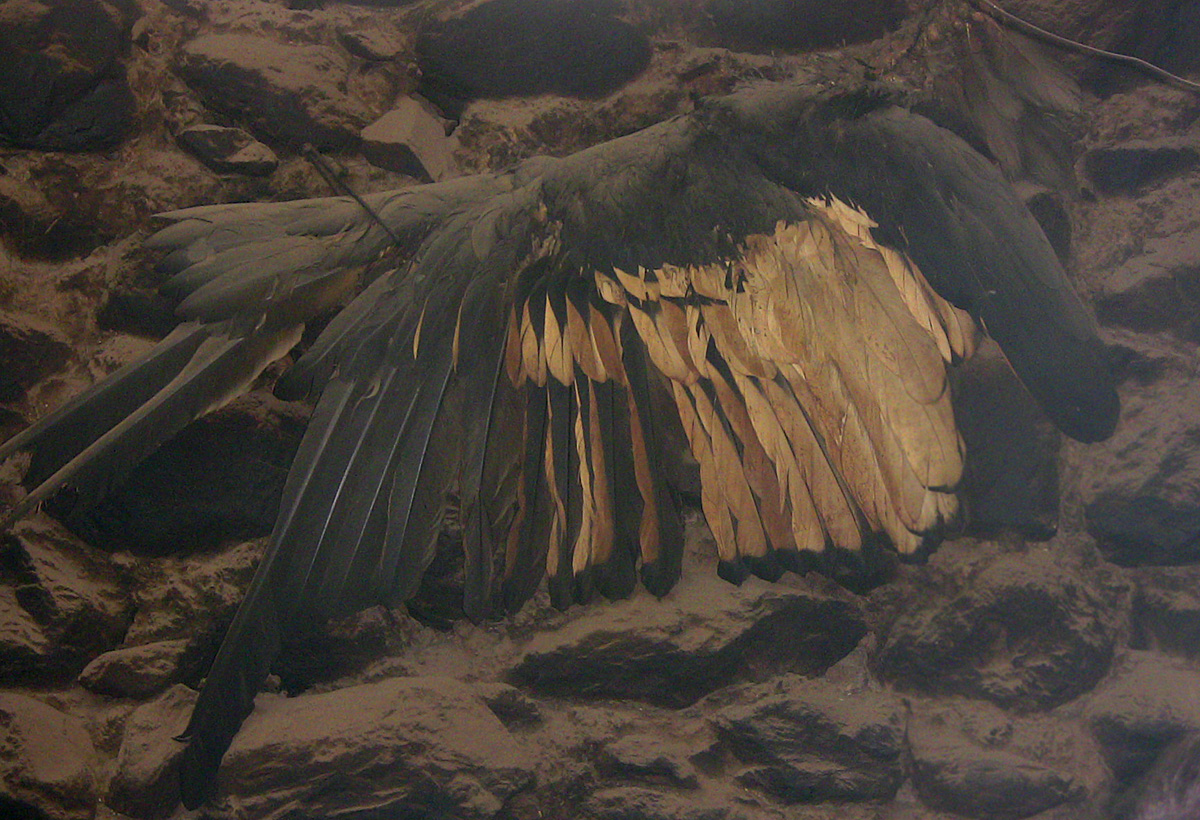
Click to enlarge
To end this post I'm going to let our guide, Fredy, talk about some of the items in the house via an amazingly high quality video clip...
Next we'll take a look at the upper section of Ollantaytambo, with its towering terraces, double-jam doorways and Sun Temple.
All text, images and video © 2010 Scott August / Cedar Mesa Music. All rights reserved.
Previous Peru Journals
Part 1: "Journey to Peru"
Part 2: "Lost in Translation"
Part 3: "Flight of the (Silver) Condor"
Part 4: Inca Pisac
Part 5: The Pisac Market
Part 6: Corn Beer and River Rafting